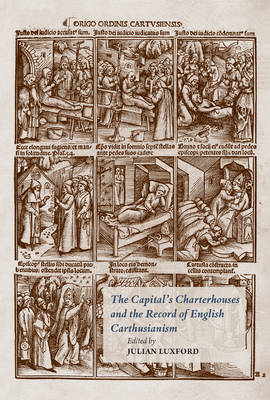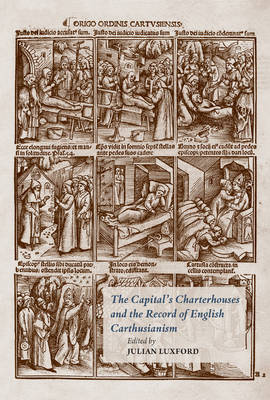
- Afhalen na 1 uur in een winkel met voorraad
- Gratis thuislevering in België vanaf € 30
- Ruim aanbod met 7 miljoen producten
- Afhalen na 1 uur in een winkel met voorraad
- Gratis thuislevering in België vanaf € 30
- Ruim aanbod met 7 miljoen producten
The Capital's Charterhouses and the Record of English Carthusianism
Julian LuxfordOmschrijving
The Capital's Charterhouses and the Record of English Carthusianism offers a substantial and versatile contribution to the history and culture of the late-medieval Carthusians in England. The nine essays presented here focus primarily on the double charterhouses built on the outskirts of London, at Smithfield and Sheen. Syon Abbey, the Bridgettine house which stood a short distance from Sheen, and was founded at the same time, is also drawn into the conversation because of its sympathetic and practical links to the Carthusians.
Particular attention is paid to the London Charterhouse. This institution is revaluated here as an engineered and ornamented structure, a sanctuary nourished by books and texts, a beacon of religion, a theatre of devotion and political manoeuvres and, in the wake of its dissolution, both a dwelling-place for affluent citizenry and a lieu de memoire for the English Carthusians in exile.
The "record" of the title is used as a unifying term for these different approaches. It covers the physical evidence studied in essays by Julian Luxford and Glyn Coppack; the devotional iconography presented by Marlene Villalobos Hennessy; the authorship, compilation, and scribal production analysed and debated by Vincent Gillespie and Michael Sargent; the response to the crisis of the 1530s explained by Diarmaid MacCulloch and Ann Hutchison; the impression the monks left on the Smithfield site examined here by James Carley; and the efforts of self-commemoration so influential for the broader reputation of England's Carthusians studied by Peter Cunich. What the reader will gain from the record is a clearer picture of the historical and cultural circumstances that made the capital's charterhouses such enigmatic, forbidding, and attractive institutions.
Specificaties
Betrokkenen
- Auteur(s):
- Uitgeverij:
Inhoud
- Aantal bladzijden:
- 340
- Taal:
- Engels
- Reeks:
Eigenschappen
- Productcode (EAN):
- 9780888448361
- Verschijningsdatum:
- 24/02/2023
- Uitvoering:
- Hardcover
- Formaat:
- Genaaid
- Afmetingen:
- 156 mm x 234 mm
- Gewicht:
- 698 g

Alleen bij Standaard Boekhandel
Beoordelingen
We publiceren alleen reviews die voldoen aan de voorwaarden voor reviews. Bekijk onze voorwaarden voor reviews.











